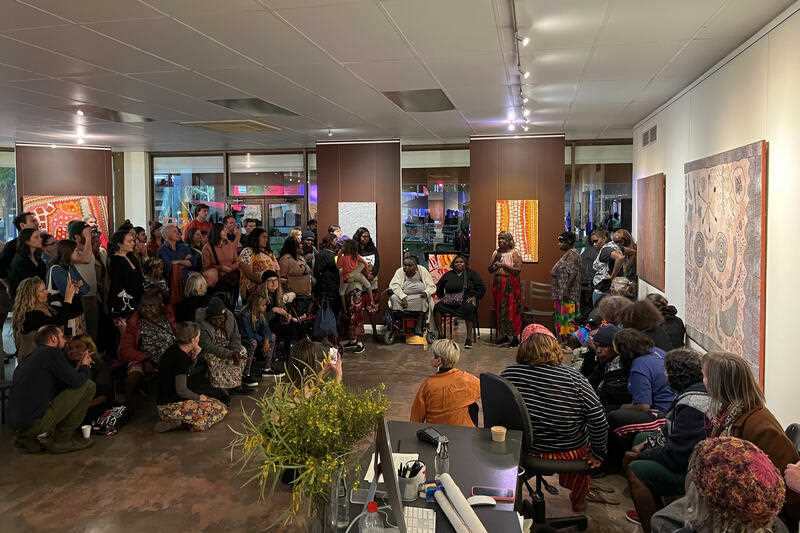The Papunya Tula Artists’ Gallery in Alice Springs is celebrating its 50-year anniversary with the opening of a new exhibition.
Painter Marlene Nampitjinpa told a crowd gathered for the opening that the Papunya Tula artists were “number one”.
“Our people used to paint a long time back (and) our sons and daughters now take our places,” she said.
The show has attracted interest from gallerists, collectors and curators, with people banging on the gallery’s door since early Friday morning, according to staffer Gretel Bull.
“We’re all so excited, the artists are really proud, the descendants of some of the original founders of Papunya Tula are here – they are also painters themselves, so there’s an incredible history and legacy,” she said.
Artists from Papunya, 240 kilometres west of Alice Springs, began what is now known as the Western Desert art movement, which has become one of Australia’s most widely recognised artforms internationally.
The style originates from traditional body and sand painting used for cultural ceremonies.
The movement also led to the establishment of Indigenous art co-operatives across Australia and helped kickstart a multimillion-dollar industry that would enable many artists to return to their ancestral lands.
“(This) is an absolute celebration of Papunya Tula really being able to showcase and dominate many stages both nationally and internationally, and the importance of the Aboriginal art movement,” Northern Territory Arts Minister Chansey Paech told AAP.
During the 1960s, Indigenous people were forcibly removed from their homelands to settle at Papunya.
The art movement began in 1971 when a school teacher, Geoffrey Bardon, encouraged a group of men at the settlement to paint a school wall. Their ancestral designs sparked a huge amount of interest.
A year later, the artists formed the very first Indigenous arts business, the Papunya Tula Artists cooperative.
The company now represents about 120 artists and is wholly owned and run by Indigenous people, with funds going to community initiatives such as health services.
The work of Papunya Tula artists can be found in public galleries and museums in Australia and around the world.
By Liz Hobday in Alice Springs
Get the latest news, sport, entertainment, lifestyle, competitions and more delivered straight to your inbox with the Canberra Daily Daily Newsletter. Sign up here.



